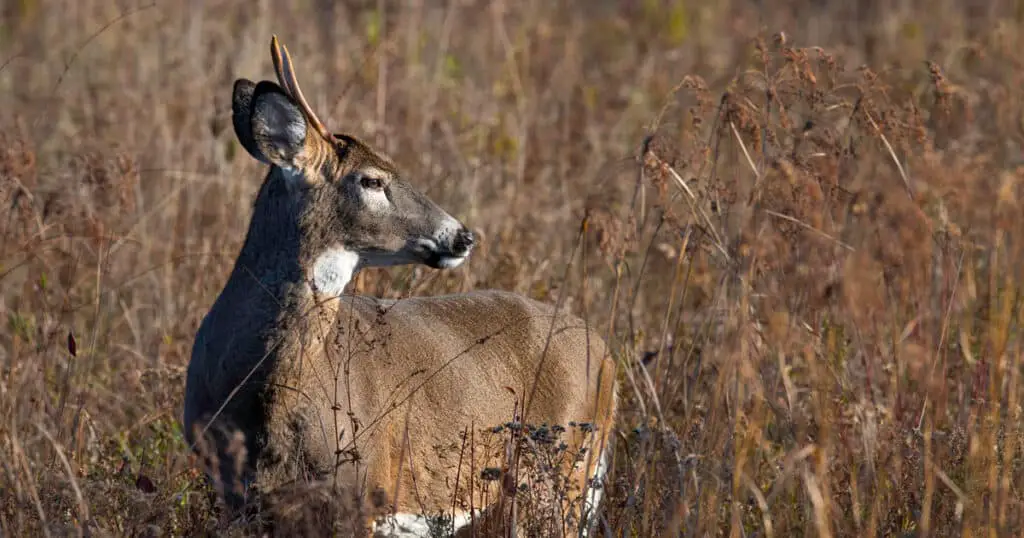In the sport of hunting, one can often tell how old a male deer is based on the size and shape of his antlers. The older a deer is, the larger and more twisted his antlers will usually be. But there is one type of deer that stands out from the rest of them when it comes to antlers, and these are known as spike bucks. But what is a spike buck, and what makes them so unique?
Let’s dive in.
What is a Spike Buck, Exactly?
Table of Contents
ToggleA spike buck is a male deer that is about two years old and has unbranched antlers on both sides of his head. Unbranched antlers refer to antlers that have no more than one point, meaning they don’t have any smaller points that branch off from the main antler.
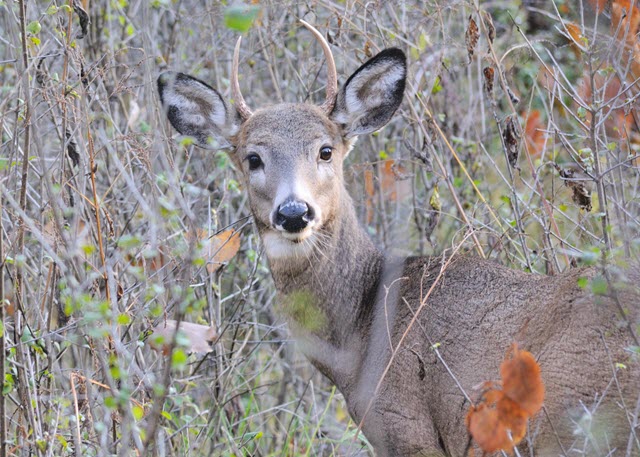
This is typically due to the buck being so young, his antlers haven’t fully developed yet, though there are a few other reasons male deer become spike bucks as well.
The following article offers a detailed explanation of what causes a spike buck and the shooting and hunting restrictions which apply to these unique male deer. It also includes a short description of whitetail spike bucks specifically.
What Causes A Spike Buck?
The most common reason a male deer becomes a spike buck starts at birth – specifically when the male fawn is born plays a big role.
If it was born later than the usual spring and summer birthing season, then it might develop into a spike buck the following year. Bucks that were born later usually have a slower development with their antlers, and thus they only have a set with one point.
A few other common causes of a spike buck include:
- Poor nutrition,
- Stress from overpopulation, and
- Harsh weather conditions.
The Role of Nutrition in Antler Growth
Nutrition is especially important to buck antler growth, especially in the first year of their life. If a male deer is malnourished, then his antlers might develop slower.
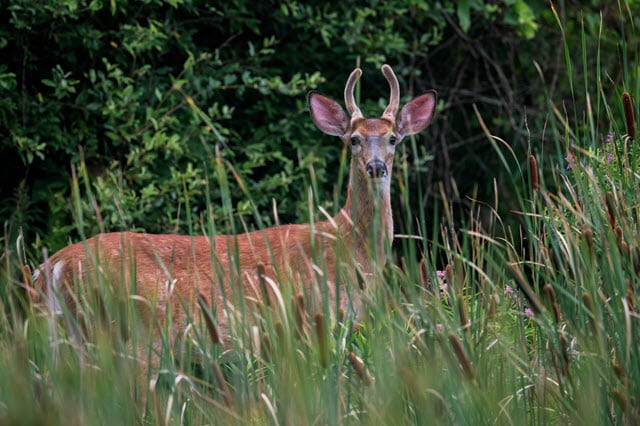
Stress Hormones
Stress from overpopulation could also affect buck antler growth. The stress hormones interfere with the hormones in the growing buck.
The Impact of Bad Weather
Lastly, harsh weather conditions can cause a buck’s antlers to develop slower. A lack of food, and more energy being consumed to keep the buck warm (instead of sending that energy to antler development) can play a role.
Does a Spike Count As A Buck?
Spikes themselves are not considered bucks by many hunters. This is because they haven’t reached the typical age range to be considered a true adult male. The average age for a fully grown buck deer is about four and a half years. Spike bucks have a bit more growing to do.
Furthermore, their antlers haven’t developed into full buck antlers yet. It is not uncommon for spikes to eventually grow into fully mature bucks with impressive antlers. They just need a little more time to grow and develop.
Spike Buck vs Button Buck
The main difference between a spike buck and a button buck is the look of their antlers. A spike buck has slender antlers without branches. A button buck doesn’t have any antlers at all.
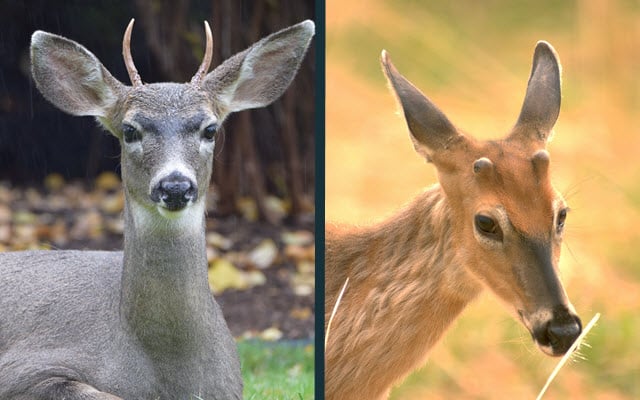
A button buck, more commonly referred to as a nub buck, is a young male fawn that has fuzzy nubs on its head rather than bony antlers.
The nubs are formed because the bony antlers have not pushed through yet. This is generally due to the buck not being old enough.
All bucks are born with pedicles in their skulls that will eventually grow into antlers. But they have to be about three to four years old for that to happen.
Once a male fawn is born, the pedicles in their skull grow significantly during the fawn’s first few months. But the antler material inside the pedicle is still not fully developed, and thus the fuzzy nubs don’t shed.
Button bucks can still develop into fully grown bucks. But, as is the case with spike bucks, they may take more time to develop.
How Old Is A Spike Buck?
The average age of a spike buck is about two years old. At this age, the buck’s antlers have already pushed through the fuzzy nubs. However, they are not yet mature enough to be considered full bucks.
Their antlers are too small and slender to do anything a fully grown male buck can do, such as fight off competition during mating season. The buck may remain a spike until he reaches maturity at four and a half years old, but this is unlikely.
Is It Bad or Illegal To Shoot a Spike Deer?
The majority of states with deer hunting laws state that it is illegal to shoot a spike buck while hunting. Since they are so young, they are protected until they reach full maturity. This keeps the population of the local deer herd steady.
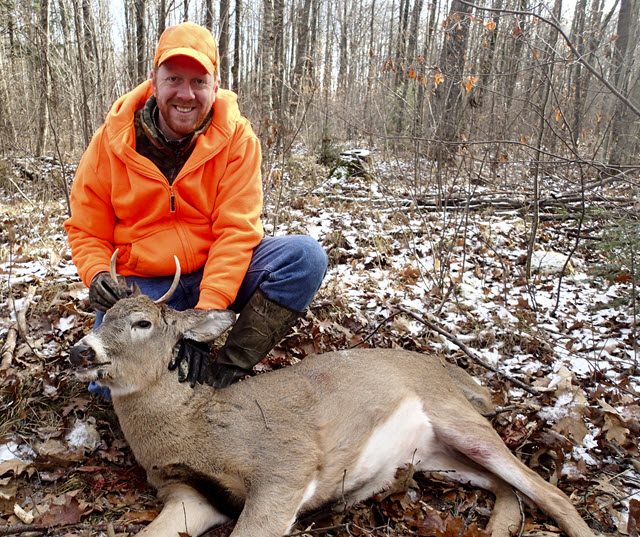
Furthermore, spike bucks are not considered that valuable in the hunting industry. Since their antlers are not fully developed, they aren’t as popular when it comes to making taxidermy out of them or selling the antlers.
If it is legal to shoot spike deer in your state, then the horns might be useful for some things. But it’s advised to stay clear of any spike bucks. Instead, go for the more mature ones with fully developed antlers.
About Spike Whitetail Deer
White Tailed Deer are the most common deer species in the United States. So it stands to reason that they produce the most spike bucks.
Fortunately, wildlife scientists and conservationists have figured out a few ways to lessen the chances of a spike buck being born.
These solutions include removing inferior antlered males and only letting the males with superior antlers breed.
Wildlife scientists found that genetics is the most important factor when it comes to antler growth.
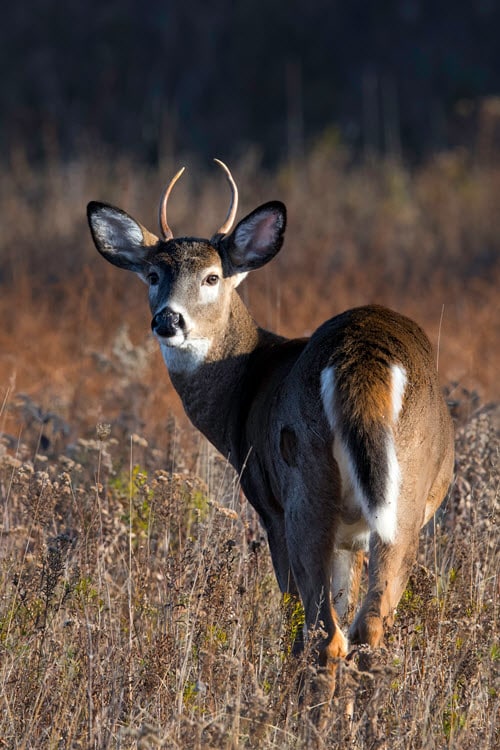
If a spike buck and a doe mate, then the chances of them giving birth to a spike buck is significantly higher. To avoid this, wildlife scientists have started removing spike bucks from the herd. In so doing, they only allow fully antlered males to mate.
While the solution likely won’t get rid of spike bucks entirely, it’s a start to making the deer population healthier.
Final Thoughts
Spike bucks are not an uncommon thing to see since the majority of them are very young and their antlers aren’t fully developed yet.
However, if you do spot one while hunting for your deer, it’s advised to stay away and let it fully mature into a buck with a full rack of antlers. The more mature a buck is, the more mature his antlers will be, resulting in a better hunting prize.

